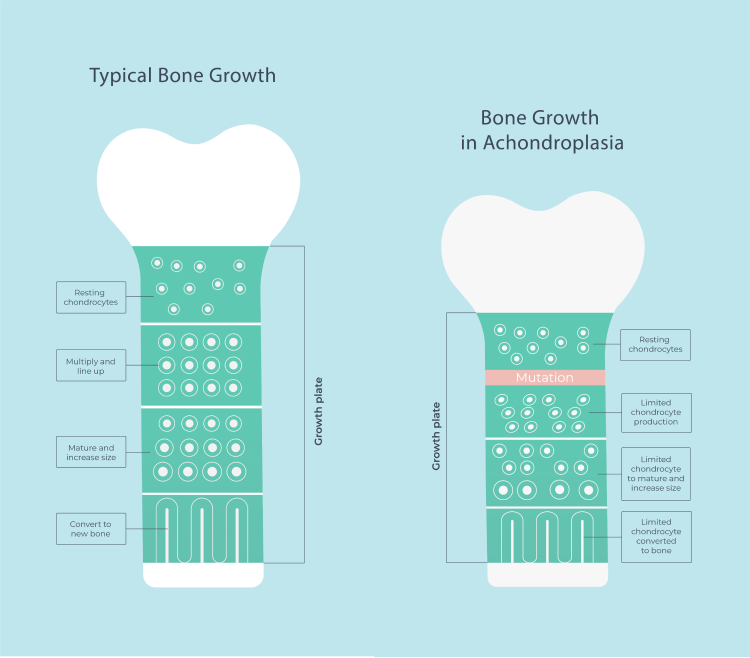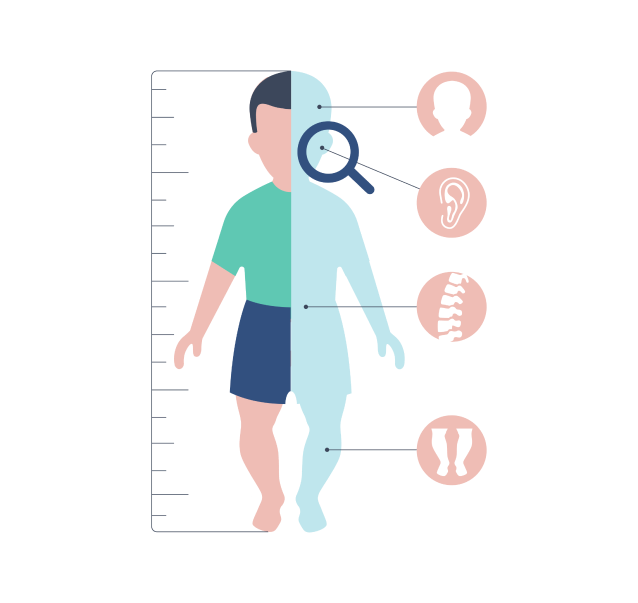
Achondroplasia is a rare genetic bone disorder. It is one the most common causes of short stature, or dwarfism.
Achondroplasia does not affect one’s cognitive development or lifespan.
Achondroplasia
Achondroplasia is a bone condition that results in skeletal dysplasia.
Skeletal dysplasia is an umbrella medical term that includes hundreds of conditions that can affects affect one’s bone and cartilage
growth, particularly the shape and size of the skeleton, spine, head, and the long bones of the arms and legs.
Cartilage is a tough but flexible tissue that makes up much of the skeleton during early development. Achondroplasia
affects the conversion of cartilage into bone.

Achondroplasia
Achondroplasia results from mutations in the fibroblast growth factor receptor 3, FGFR3 gene. The FGFR3 gene’s normal function is to provide instructions for making a protein that signals bones to slow down growth by limiting the formation of bone from cartilage.
The cells that produce cartilage are called chondrocytes. FGFR3 normal function is to inhibit the proliferation of chondrocytes, thus slowing down the formation of bone.
Without the mutation, FGFR3 receptors are usually only turned on when the body needs to stop changing cartilage into bone. With the mutation, the FGFR3 receptor is overly active, which leads to severely limiting bone growth.


Achondroplasia
Although skeletal dysplasias are a rare medical condition, achondroplasia is one of the most common forms of skeletal dysplasia.
On average, achondroplasia occurs in 1 in 25,000 births. 80 percent of cases occur in families with no history of achondroplasia. In the case of such families, the mutation in the child is new and occurs randomly.
However, a man or woman with achondroplasia has a 50% chance of passing it onto their child. If both parents have achondroplasia there is a 25 percent chance the child will be born with what is called homozygous achondroplasia, which leads to stillbirth or death shortly after birth.
Achondroplasia
Achondroplasia may be diagnosed in utero, through fetal ultrasound, in late stages of pregnancy. The ultrasound can show if a baby’s arms and legs are shorter than average and if the baby’s head is larger than average.
After birth, physical examination can confirm an achondroplasia diagnosis. DNA testing is also an option for in utero and after-birth diagnosis.
A genetic counselor can help navigate the diagnosis process or counsel a couple, where one or both partners have achondroplasia, who are considering having a child.


Achondroplasia
At first glance, achondroplasia may appear to affect only the height of an individual.
In reality, this condition affects many areas of the skeleton, which affects the regular functioning of many parts of the body.